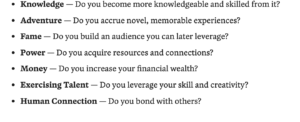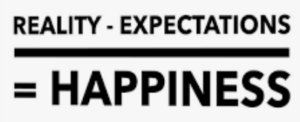How to Become a Swiss Army Knife of Decision Making
A typical day involves thousands upon thousands of decisions. From figuring out what type of toothpaste is best to who we should spend time with. Our iPhones, computers, TVs, spouses, kids, etc are shouting at the same time to pay them attention and do what they want. The information overload is endless.
So how do you actually decide where to spend your time? And how do you find the right way forward that maps to what you actually care about?

Small Decisions you face every day that can make a lasting impact:
Do you wake up and go for a run or do you jump right into a popular video game your friend told you about?
Do you order the large fries and coke or do you stick with water and the food on the menu that is a bit green and organic?
The reality is, each decision we make is another point of the category of who we want to become. And when you add it all up we are simply a lagging indicator of all the decisions we have chosen in our life. So being overweight is not just being overweight. It is an indicator that you have chosen to overeat thousands of times and here is where you are.
That is why it is so important to have a process for how you make decisions. Even more so, having a method for understanding WHY you make the decisions you made and a way to reflect on these decisions.
And in the unfiltered, 24/7/365 information age it is now more important than ever to create a process for decision making and have a way to compare that to your values.
How do I know what I value?
Those old beany babies or trading cards that you threw away, the wrinkled non-fitted dress, the half-broken computer. Those things at one point had a large value to you.
Can you think back to the time when you first had possession of those items? I bet you experienced a large hit of dopamine when you finally booted up that computer or took the tag off that new pieces of clothes.
We are all different. Different motivations and different priorities. But despite our differences, we all are driven by incentives to accomplish what we value the most. The lawyer is obsessed with landing his next big financial payday, the teacher wants a connection with her study, the artist’s canvas expresses his creativity. And so on and so on.
Despite these differences, categorically we are all running similar races to accomplish some of the very same core desires. The difference is the order of which is the most valuable to us.
The Core Desires of Everything and Putting your stamp on them:

Step 1: Rank Your List
As you are making any big decision, think about the categories above and some of the time going down the list.
How would you rank the categories above? What lines jumped out when you read them in your head?
Did you imagine sipping cocktails on the water in your new boat, or how about creating a project from start to finish when no one believed in you?
Do you want to have the whole world know your name or are you focused on becoming a subject matter expert in a field of your choice?
There is no wrong answer when determining what you value because your values are unhesitantly you. Shaped by your childhood, your parenting, your experiences, your goals, and dreams. Create a list of the above with your must-have, nice to have, and not needed.
Step 2: Re-Rank Your Upcoming Decision
Now that you have a list of what is most important to you, the ones that represent your north star it’s time to think deeply about the decision in front of you.
Go through each category and think about what this decision will mean for you long term.
Will working at the local nonprofit get you financial outcomes compared to others? Will doing an accounting job really be the best way to express your creativity?
It is vital to be completely honest with your decision. You will always come across new information and the ranking you do now will most likely change as you evolve. And that is okay.
The Ten-year-old would never put money anywhere near the top of his list as money meant nothing to him. And Learning a language may help you bond with others but unlikely that it will allow you to build an audience that you can leverage later on in life.
This will take some practice, but soon you will quickly be able to break down decisions into what its impact will be and most importantly what its impact would have on you.
Step 3: Compare the Option in Front of you to Your Values
Last, Take your north start on the left side of your whiteboard or paper, and draw a line in the middle. On the other side bring up the decision you are considering.
Does what you are considering fulfill the categories that are at the top of your list?
How does the Potential Fulfillment from this decision look like next week, next month, next year?
It is okay to be flexible here, your values will change and you are allowed to revisit decisions that may not have been a good decision for you at one point that was a no-brainer for you at another time.

How this Process Minimizes Long Term Regret
I hate thinking about things that I regret. There is nothing worse than the emotion of regret because you can’t do anything about it. You sit there in your feelings thinking about the money that could have been invested, the date that could have been better, the opportunity that was right in front of you that you let get away.
Having a framework similar to the above will allow you to evaluate your decisions with razor-sharp focus and long-term thinking in mind. At the least, you will identify what is the most and least important to you. You will quickly identify patterns with what type of decision-making brings you happiness and what type of people are around with who you can surround yourself with.
With some practice, this will enable you to become a swiss army knife of decision making. Avoiding the things that are not a priority and building the life you want regardless of if that decision was the right decision at the time.
There is no way around it, we live in a world with an endless amount of information around us. This simple method of building out a list of what you value and comparing that to a decision in front of you will help transform your life.
Not only will you avoid decision fatigue from thousands of decisions each day, but you will also quickly figure out what you want and gravitate towards the decisions that provide you with that outcome. No more FOMO or anxiety over what is your best path forward.
And most of all, clarity in a world that is anything but gray and murky.

